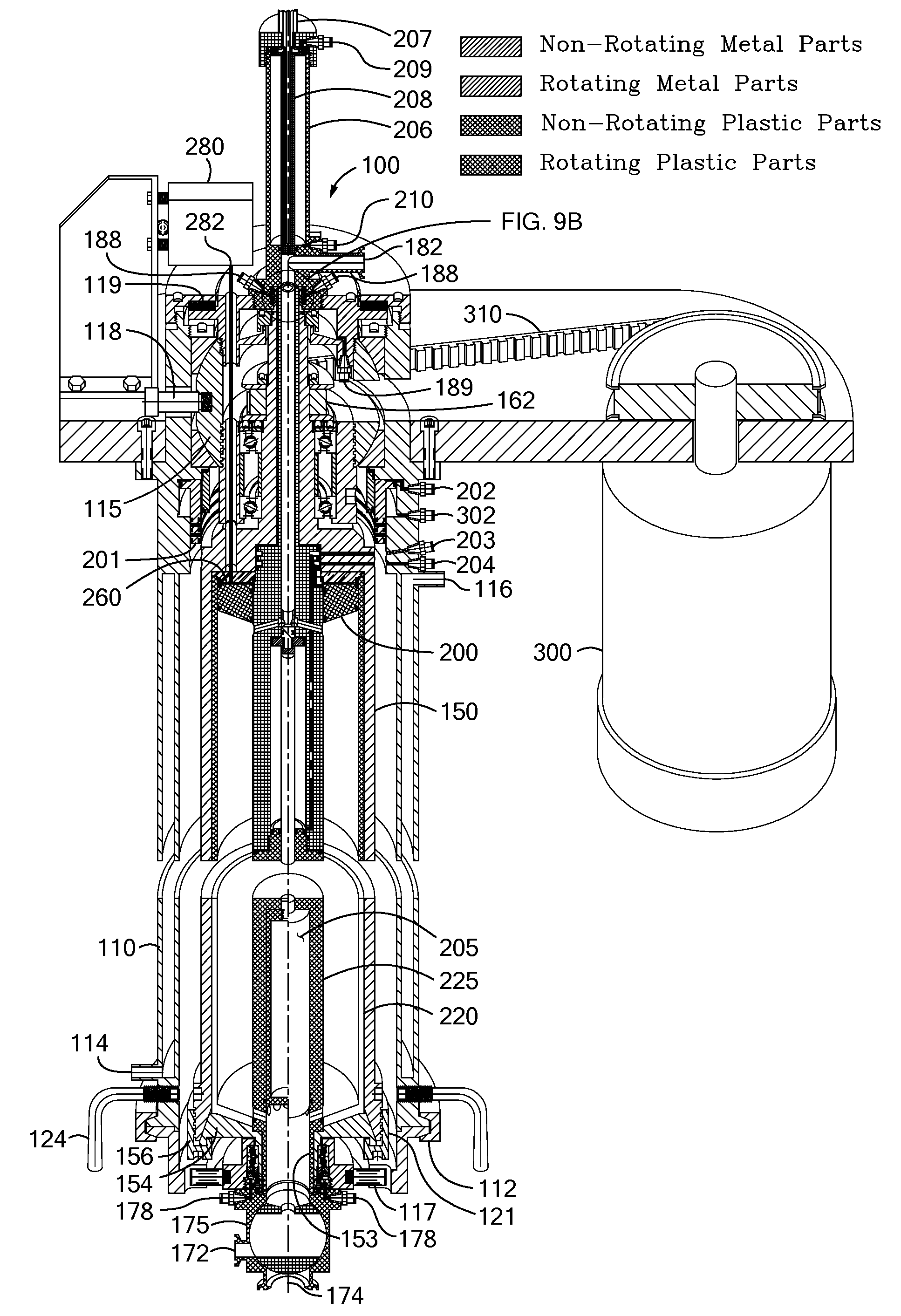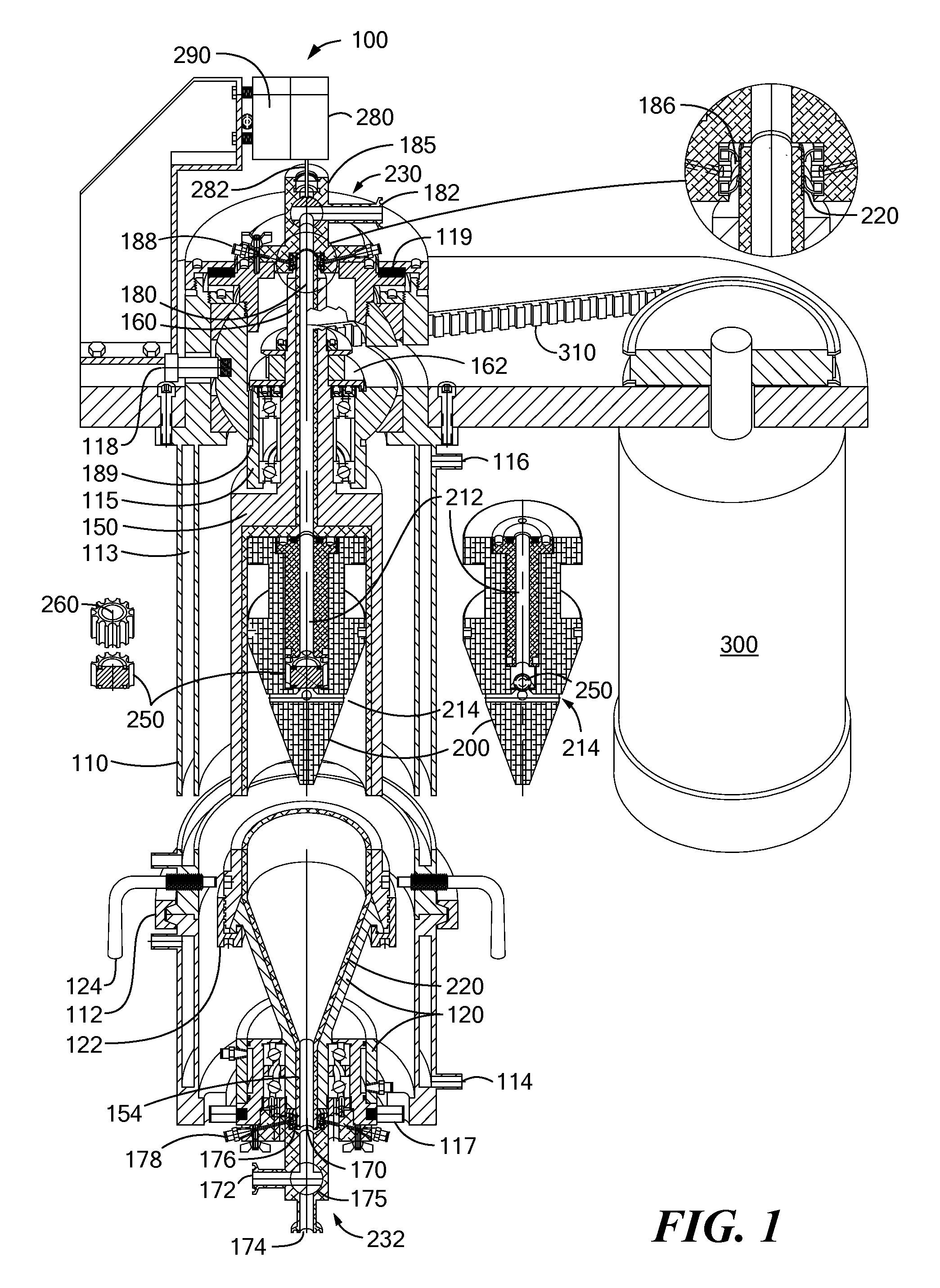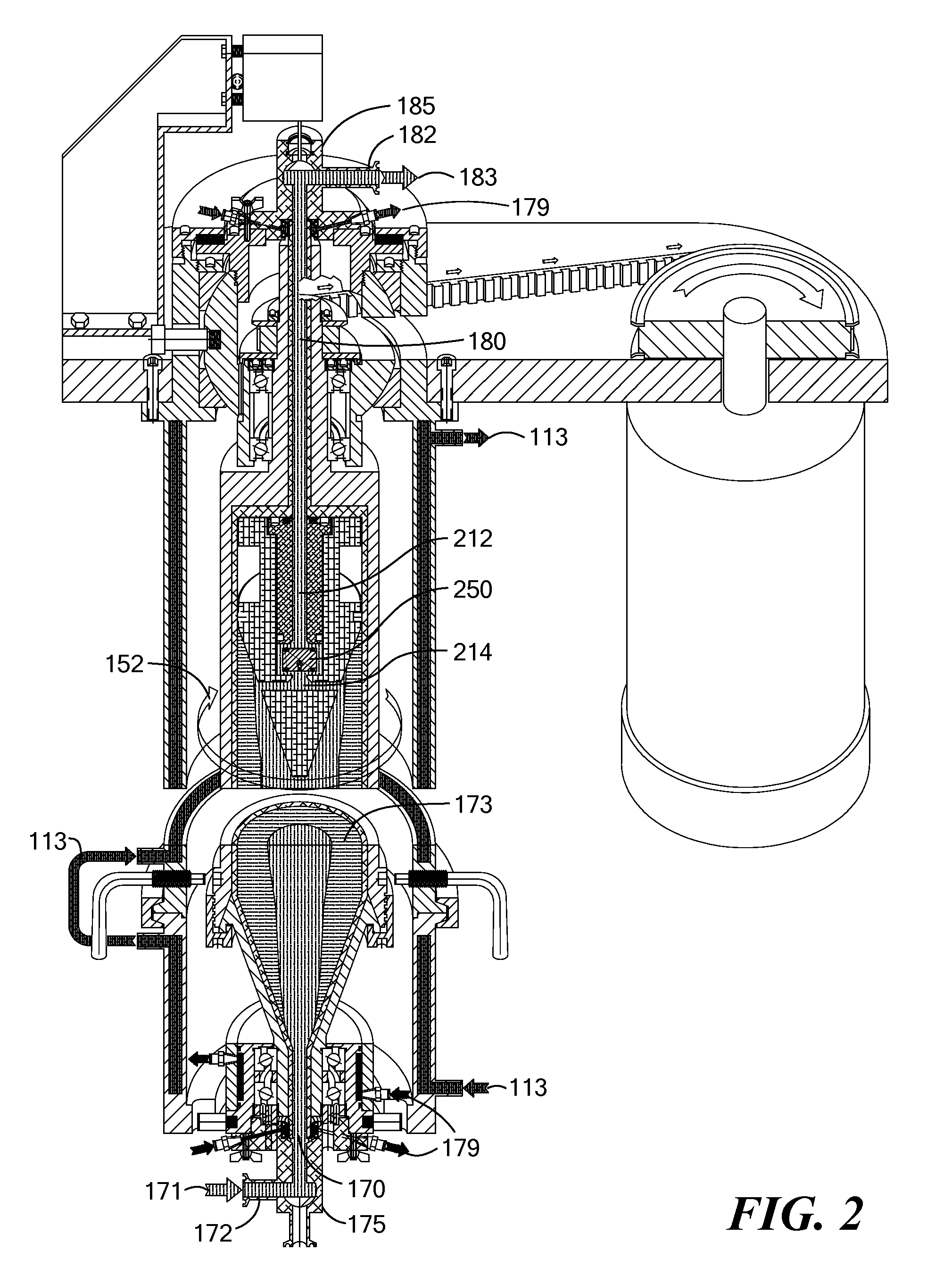Solids discharge centrifugal separator with disposable contact elements
a centrifugal separator and contact element technology, applied in centrifugal force sediment separation, centrifugal process, centrifugal force, etc., can solve the problems of poor yield, damage, sensitive chemical or biological substances such as intact cells, etc., to eliminate the need for clean-in-place, and reduce the need for cleaning
- Summary
- Abstract
- Description
- Claims
- Application Information
AI Technical Summary
Benefits of technology
Problems solved by technology
Method used
Image
Examples
Embodiment Construction
[0041]FIG. 1 shows an embodiment of a centrifugal separator according to the invention in vertical section, with a middle section removed. Separator 100 includes separator bowl 150, separator housing 110, and variable speed drive motor 300.
[0042]The housing has upper, middle, and lower portions. The middle portion of the separator housing encloses separator bowl 150. In the embodiment shown in FIG. 1 this portion of the housing is temperature controlled by fluid jacket 113 for flowing a controlled temperature fluid, such as water, in through cooling inlet port 114 in the lower portion of the housing and out through cooling outlet port 116 near the top of the middle portion of the housing. Depending on the application the fluid jacket of the housing can be used either to cool or warm the centrifuge interior, and therefore the sample during separation. In separations of sensitive materials such as cell suspensions it is typical to cool the centrifuge using cooling water, for example t...
PUM
| Property | Measurement | Unit |
|---|---|---|
| diameter | aaaaa | aaaaa |
| diameter | aaaaa | aaaaa |
| temperature | aaaaa | aaaaa |
Abstract
Description
Claims
Application Information
 Login to View More
Login to View More - R&D
- Intellectual Property
- Life Sciences
- Materials
- Tech Scout
- Unparalleled Data Quality
- Higher Quality Content
- 60% Fewer Hallucinations
Browse by: Latest US Patents, China's latest patents, Technical Efficacy Thesaurus, Application Domain, Technology Topic, Popular Technical Reports.
© 2025 PatSnap. All rights reserved.Legal|Privacy policy|Modern Slavery Act Transparency Statement|Sitemap|About US| Contact US: help@patsnap.com



